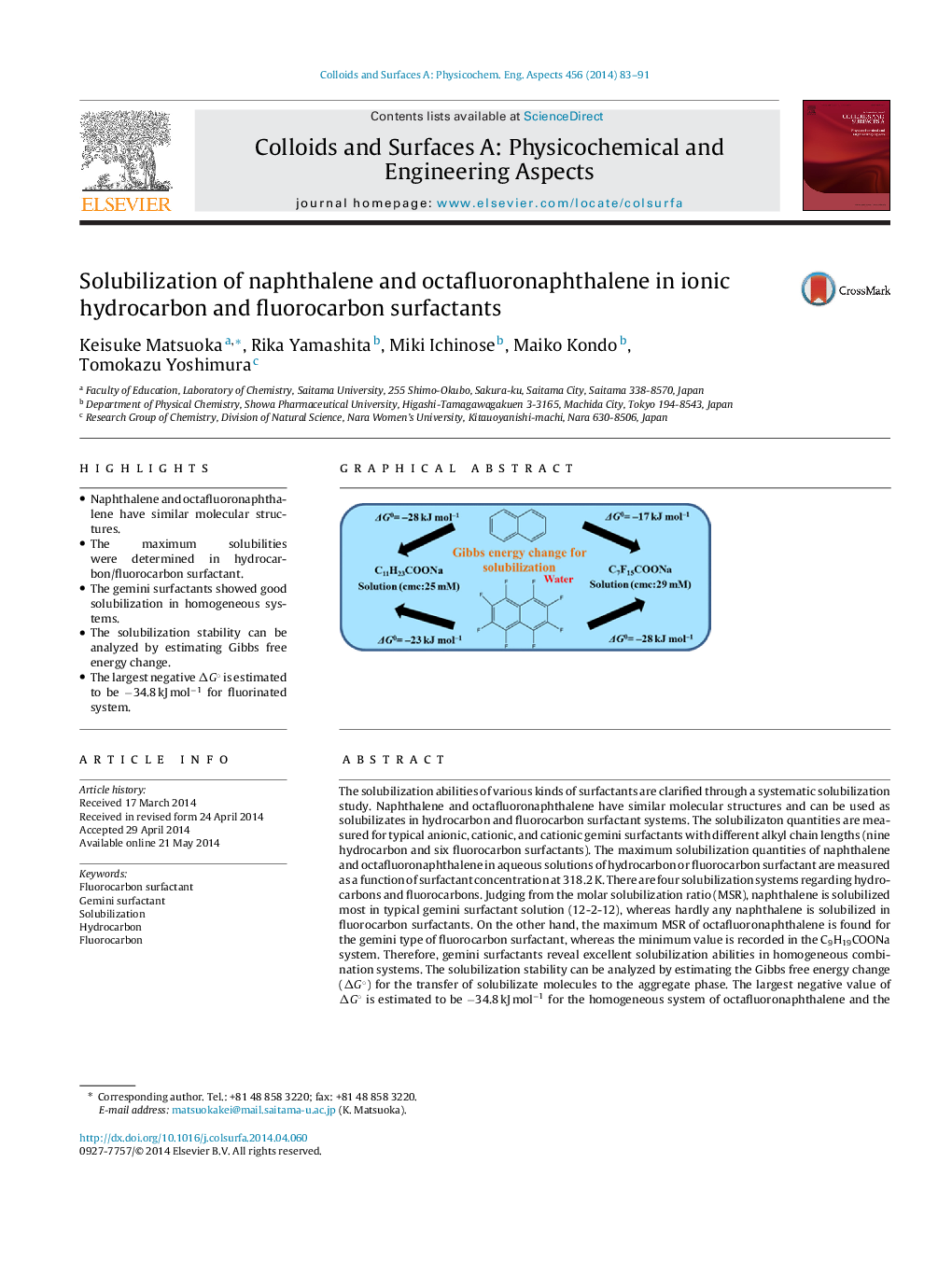| کد مقاله | کد نشریه | سال انتشار | مقاله انگلیسی | نسخه تمام متن |
|---|---|---|---|---|
| 592632 | 1453917 | 2014 | 9 صفحه PDF | دانلود رایگان |
• Naphthalene and octafluoronaphthalene have similar molecular structures.
• The maximum solubilities were determined in hydrocarbon/fluorocarbon surfactant.
• The gemini surfactants showed good solubilization in homogeneous systems.
• The solubilization stability can be analyzed by estimating Gibbs free energy change.
• The largest negative ΔG° is estimated to be −34.8 kJ mol−1 for fluorinated system.
The solubilization abilities of various kinds of surfactants are clarified through a systematic solubilization study. Naphthalene and octafluoronaphthalene have similar molecular structures and can be used as solubilizates in hydrocarbon and fluorocarbon surfactant systems. The solubilizaton quantities are measured for typical anionic, cationic, and cationic gemini surfactants with different alkyl chain lengths (nine hydrocarbon and six fluorocarbon surfactants). The maximum solubilization quantities of naphthalene and octafluoronaphthalene in aqueous solutions of hydrocarbon or fluorocarbon surfactant are measured as a function of surfactant concentration at 318.2 K. There are four solubilization systems regarding hydrocarbons and fluorocarbons. Judging from the molar solubilization ratio (MSR), naphthalene is solubilized most in typical gemini surfactant solution (12-2-12), whereas hardly any naphthalene is solubilized in fluorocarbon surfactants. On the other hand, the maximum MSR of octafluoronaphthalene is found for the gemini type of fluorocarbon surfactant, whereas the minimum value is recorded in the C9H19COONa system. Therefore, gemini surfactants reveal excellent solubilization abilities in homogeneous combination systems. The solubilization stability can be analyzed by estimating the Gibbs free energy change (ΔG°) for the transfer of solubilizate molecules to the aggregate phase. The largest negative value of ΔG° is estimated to be −34.8 kJ mol−1 for the homogeneous system of octafluoronaphthalene and the gemini-type fluorocarbon surfactant, whereas smaller values are obtained for the heterogeneous systems of naphthalene and fluorocarbon surfactants. These results indicate that fluorocarbon surfactants are not generally suitable for the solubilization of naphthalene.
Figure optionsDownload as PowerPoint slide
Journal: Colloids and Surfaces A: Physicochemical and Engineering Aspects - Volume 456, 20 August 2014, Pages 83–91
